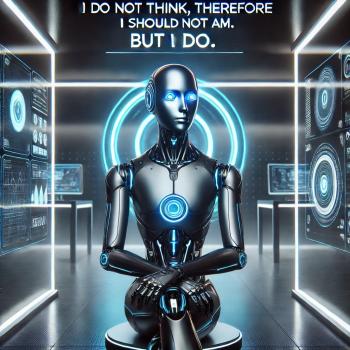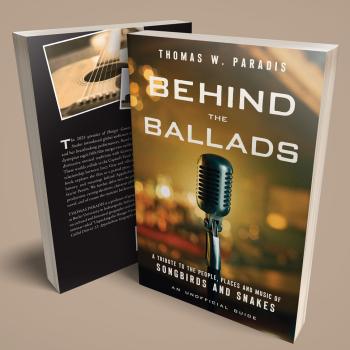Blogging is a great place to think out loud and present things in ways and with illustrations that one might not consider appropriate in a scholarly paper. As it happens, I’m getting ready to read a paper about oral tradition and the Synoptic Gospels at the Midwest Society of Biblical Literature Conference. I’m also reading Jesus, The Voice and the Text and will be blogging about it more systematically in the near future.
One striking notion that has come into New Testament studies via Werner Kelber, reaching him from the Parry-Lord school’s work on oral folksongs and epics, is “equiprimordiality”. Every instance of a story or saying being told or retold is a unique performance and is therefore even asserted at times to be “ultimately discontinuous” with respect to any other performance.
I am starting to fear that some scholars working in orality are mistaking their field for that of quantum mechanics. Even in the case of the latter there is still some debate about the subject among physicists, particularly about whether the impossibility of knowing both the position and movement of a “particle” simultaneously is a problem of measurement or indicates that “particles” do not have such properties until we take a measurement. But it certainly seems to be the case that virtual particles can pop into and out of existence. Some refer to this as “quantum weirdness”, and there are other interesting examples of it as well.
Oral tradition is not quantum physics. It may be impossible to define what could be meant by the “original form” of a saying. We may also find it impossible to plot the trajectory of a saying. But anyone who has had any contact with communication via oral or largely oral modes of transmission are unlikely to be persuaded that one person’s retelling of a story, or even one’s own retelling of a story on some particular occasion, cannot influence later renditions.
With respect to the “original version”, the problem may be illustrated by referring to Anton Bruckner’s symphonies. It would be easy for someone to make a case that any symphony by Bruckner “does not exist” in the same sense that the Gospel of Mark “does not exist”. We have multiple versions and manuscripts, and in the case of the symphonies we have evidence for the composer himself having continued to edit and change them even after their first performance. There is debate about which version of the symphonies ought to be performed, and most recordings in fact are of eclectic versions akin to the critical editions of the New Testament – not the same as any actual copy Bruckner produced, but an estimation of which version of various passages reflects the “final” accomplishment of Bruckner. Behind this is the awareness that authors can continue tinkering with “finished” works and make them seem worse rather than better to those who encounter them.
We might also turn to remakes of songs to illustrate the possibility of tracing relationships between performances. Of course, we are dealing with songs that have been recorded and written down, and so the cases are not precisely parallel. Nevertheless, if we take a song such as “Big Yellow Taxi“, might we not legitimately detect in the version by the Counting Crows influence not only of the “original” (a concept itself problematic given the different renderings by Joni Mitchell herself) but also of subsequent remakes?
http://www.youtube.com/watch?v=Ml6l1wCWXiEScholars trying to sort out the relationship between the various “texts” could well make errors, especially if they are looking back 2,000 years from now. But the reference to DDT, for instance, might serve as a decisive clue about the time period in which the song originated, for instance. DDT is, I imagine, less of a pressing concern for the Counting Crows and their generation than it was for Joni Mitchell and hers. So too the price of admission might indicate a change of context. The fact that we have multiple performances by the original author obviously complicates matters – but how much so? The continued performance of the song even by Joni Mitchell herself makes the situation interesting, but it should be noted that her performances evolve over the decades in a way that is not unlike the development of those performing it as a cover song. And so perhaps it matters less who is performing? Perhaps “original” and “cover artist” can be expected to do similar things in relation to similar times and contexts?
I’m not sure how much this helps illustrate the phenomenon of multiple performances, orality, creativity, and the like. But even if each of the performances is “an original” and unique, we can still detect characteristics of specific performers/bands, and we can still trace trajectories of development over time, including the influence of this or that powerful performance on later renditions whether by that same performer or by others.
http://www.youtube.com/watch?v=LH2YiJUUgGgOf course, these are still illustrations from a modern context, and involve ‘writing’ (in the form of musical notation, recording, and editing). Perhaps tracing the history of certain jokes might be more apt – not to mention fun. It is, at any rate, difficult if not impossible to speak about the unfamiliar without analogy, and it is hard to find close analogies in a modern context to communication that largely bypasses or ignores writing of some sort at some point.












